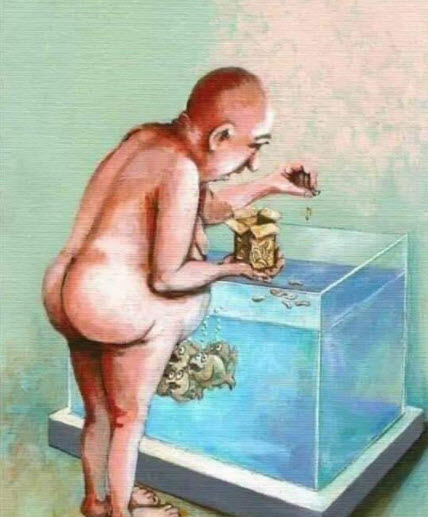
1 Basics, 2 Cycling, 3 Food, 4 Water, 5 Toxins, 6 Filtration, 7 Media, 8 Filters, 9 Aeration, 10 Diseases, 11 Symptoms, 12 Treatment, 13 Stocking, 14 Equipment, 15 Plants, 16 Algae, 17 Fish, 18 Maintenance
The author, David Bogert (LaBelle, Florida), has kept many aquariums of all sorts and fish of all sorts for over 56 years. But note he is NOT an “expert” on ANY of the aspects let alone all of the aspects of keeping aquariums. The chemistry and biology of an aquarium are far too complex for anyone to be a true “expert” in ANY of the various aspects.

The author, has a BS in chemistry, something which is useful only in the sections on chemicals like water chemistry, rocks, silicones, conditioners, and fertilizers. He has some 42 patents, largely in the field of medical devices. This ability to invent things only helps with some DIY designs. But he has also worked for much of his life as a research scientist doing literature searches, data analysis, statistics, and a little-understood field called “design of experiments” or “DOE”. This experience is very applicable to ALL of the fish-keeping science.

Thought Processes of the Author
The author generally uses three ways to justify statements on this website:
- Simple logic and common sense
- Experiments with computerized statistical analysis of the data
- Journal Articles and Books
The author has an extensive library of books on fish husbandry, tropical fish, and tropical fish diseases. These references, references from researchgate.net, sematicsscholar.com, and sciencedirect.com, references from papers on such search engines as Google Scholar, and references from a private search service form the basis for many of the more “in-depth” articles on this website.

Opinion and Anecdotal Evidence
This is a blog, not a science journal paper. So in addition to science, the author does occasionally use:
- His own opinion
- Anecdotal evidence
The opinions of the author are given out where opinions are all there are, such as the articles on stocking and data sources. And occasionally I use some anecdotal evidence when that anecdotal evidence simply adds additional weight to the science. I do try to identify opinions and anecdotal evidence whenever I use them. But one should note that my opinions and ONLY my opinions are 100% accurate (that is a JOKE folks!).
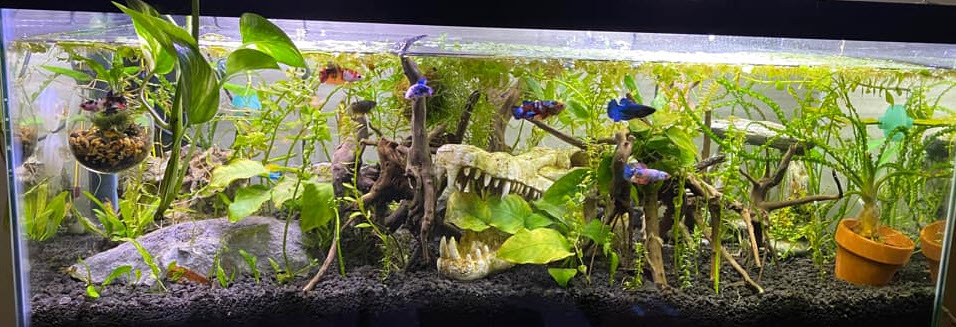
A Double Standard
Note that many will criticize the author for not providing a C.V. that proves his abilities are somewhat akin to Albert Einstein. These same people will then say suppliers and YouTube gurus who give no C.V., have no qualifications, and do no testing are accurate in all their claims. This is a classic “double standard”.
As an example, some individuals have said will say that a simple test is done by this author which conclusively shows Seachem Prime does not detoxify ammonia is thus invalid because the author hasn’t “proven” his qualifications. Or the testing wasn’t “peer-reviewed”. And they will ignore the fact that two other professionals duplicated the author’s tests (actually they did much better tests than the author did!), added some tests of their own, and came to the same conclusions.
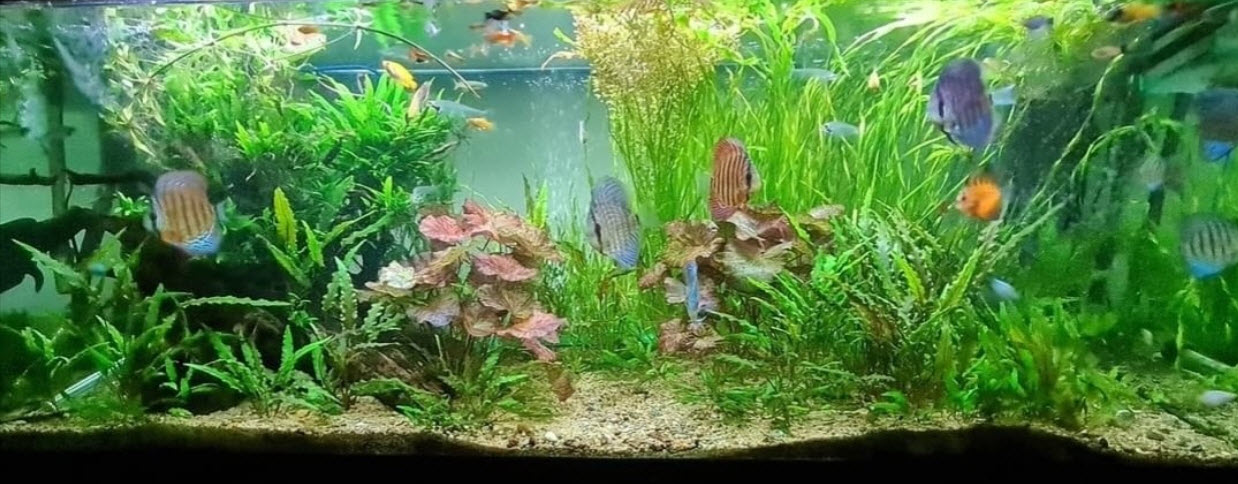
These same individuals will say Seachem’s claim that Prime does detoxify ammonia is valid with absolutely no testing data and only anecdotal evidence that it does what it says. There is no c.v. or qualifications on the anecdotal evidence authors. Since there is no testing data “peer review” is of course impossible. But the claim is valid per these same individuals. This double standard is repeated over and over again. Talk about bewildering!
But I ignore criticism on the internet. I’ve learned to never get into debates over the internet. Even with folks who call me an idiot.
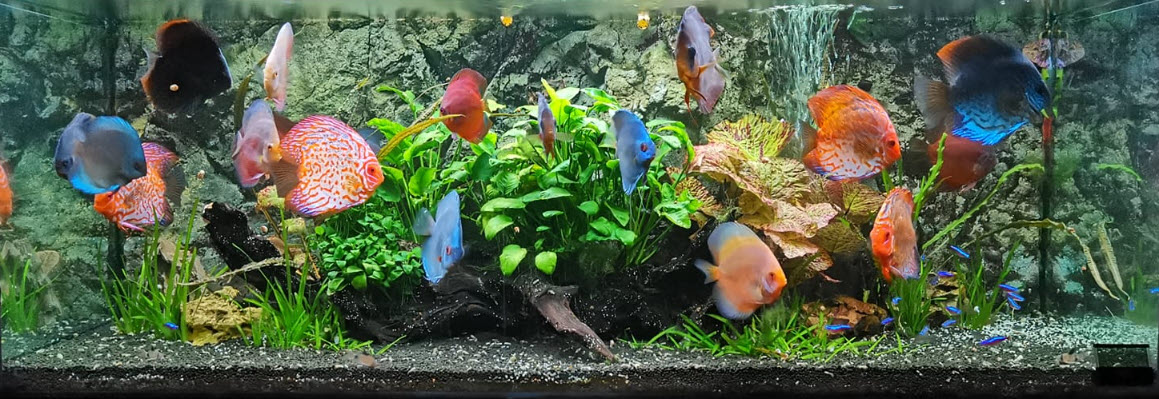
Experiments by the Author
The author has also done over thirty simple scientific tests on aquarium topics. All these tests used replicate experiments with controls. Almost all had very powerful computerized statistical analysis done on the data. Some took as long as 15 months to complete. These tests were deliberately kept simple so that home hobbyists can duplicate them if they so desire.
Now many take issue with these tests, saying they don’t meet this or that “scientific standard” or the data is “too scattered” to be of use. They ignore the fact that the tests had very powerful computerized JMP statistics performed on them that typically say the data is meaningful with at least a 95% confidence level. They also conveniently ignore the fact that there are typically absolutely NO tests by anyone with any data which proves the author wrong.
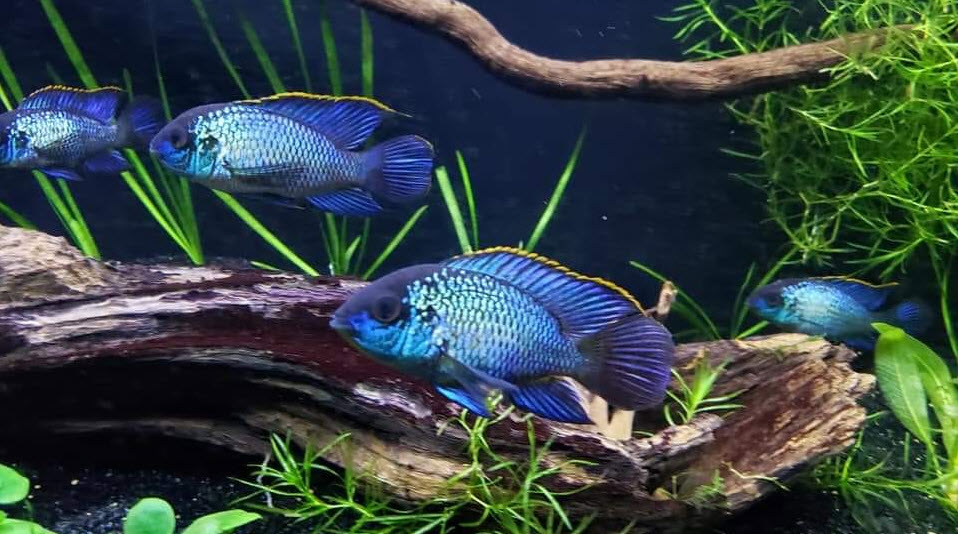
For example, a few probably well intentioned individuals who simply are not up to speed on the latest in computerized statistics said the author doesn’t do the tests on “bacteria in a bottle” cycling products properly. Supposedly the author had only two replicates and had more than one variable and that the data he got was too random to be meaningful. Interesting critique.
- First off the tests were done properly. The data was found statistically significant by well-established JMP statistical computer software. This would not happen if the testing was improperly done (i.e. not enough replicates or too many variables). Powerful modern software can analyze data with NO replicates and LARGE numbers of variables. Welcome to the age of computers!
- Secondly the natural process of “cycling” will have huge variations simply because it is a very complex natural process with a huge number of variables that simply cannot be closely controlled. Indeed, any experiment on cycling which does NOT have a lot of variation is probably fake.
- And finally, there is absolutely NO testing that can be found which confirms the opposite, namely that bacteria in a bottle products work. That’s right. NONE! ZERO! Not one journal article anywhere!
The author has acted as the consultant on many projects where he had to use complex computerized statistical software. He is an expert in that field. But many with only a very rudimentary understanding of statistics and modern computer programs seem to be very free with their criticisms of the experiments and computer statistics done by the author. Such is what has happened with the internet, where everyone, and I mean EVERYONE, is an expert.
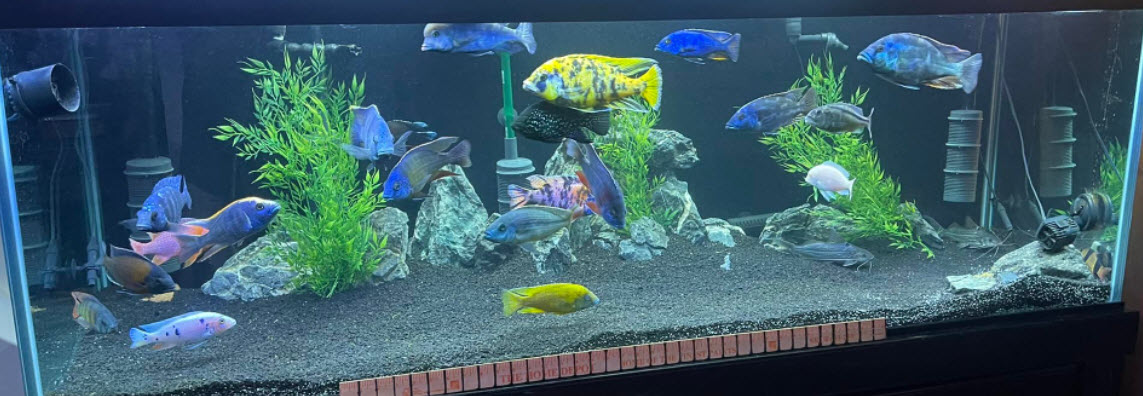
References
Others take issue with the fact that the author does not provide all the details (journal, Journal number, all the author’s full names, etc.) on referenced journal articles via a “standard” method. The author doesn’t do that because the various bibliography and citation methods used in various research papers in academia (APA, CSE, ACS, “Harvard method” etc., etc. ad infinitum) are very outdated.
With modern computers and modern research search engines, all that detail (complete journal pages, all the authors, etc.) is NOT necessary. Put in the title in the search engine and up will pop the article, or even just the subject and the author’s last name. Easy. So I don’t put in “all the details” or some long bibliography. It just is not needed in the age of computers. And adding the unnecessary information will just make some long boring articles even longer and more boring.

The Author does not Mince Words
Because the author calls out all the many parroted myths of social media, many say he is a “contrarian” (“a person who opposes or rejects popular opinion”). Because the author doesn’t like fake “marketing hype” and calls it out whenever he sees it, many say he “has a chip on his shoulder”. The author pleads guilty to both charges.
We list 150 separate instances where we reject “popular opinion” because the “popular opinion” is not supported by science. We also list 25 separate instances where we reject “marketing hype” as it is not supported by science. Some seem to think this makes the author “opinionated”. If rejecting ideas that cannot be supported by the science is “opinionated”, again, we plead “guilty as charged”.
Unfortunately, I am also a completely tactless, crusty, curmudgeon. At a reader’s suggestion, I did a word search of this website and eliminated about seven times I called people idiots. I replaced the term “idiot” with hopefully some more diplomatic wording. Hey! I’m trying!
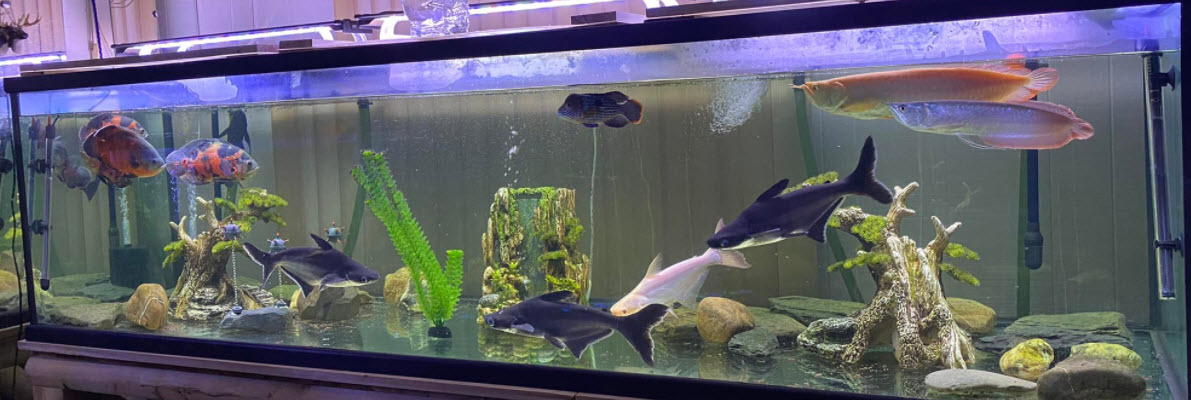
Author Bias
And the author does admit to a strong bias against several companies where snake oil marketers blatantly use huge amounts of egregious “pseudoscientific bedazzlement” to sell worthless aquarium products. I can’t help it. I think it is called “being human”.
Also note the author does admit a certain bias against some organizations (such as PETA) and individuals which equate passionate opinions with a right to criticize newcomers to the hobby. I have found that to keep my blood pressure under control, I have to just block these “fish police” whenever I see them.
Unfortunately, newcomers to the hobby haven’t blocked them and thus get these folks’ wrath pretty much daily. I wish administrators would be more proactive in removing and blocking the fish police.
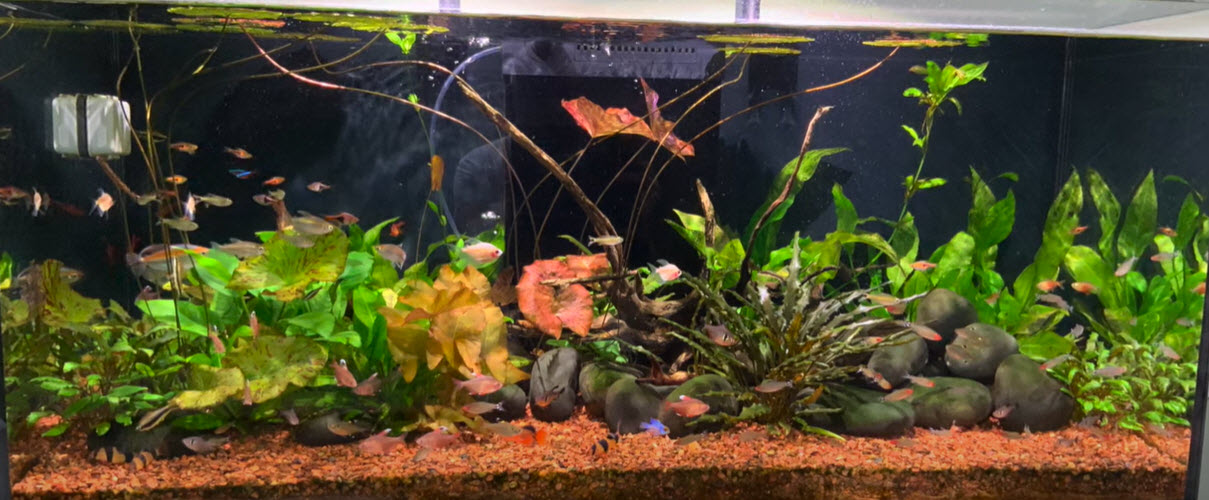
.
Return to Home Page and Main Menu
.
Aquarium Science Website
The chapters shown below or on the right side in maroon lead to close to 400 articles on all aspects of keeping a freshwater aquarium. These articles have NO links to profit-making sites and are thus unbiased in their recommendations, unlike all the for-profit sites you will find with Google. Bookmark and browse!

Dave says
In reply to Susan ……… That sounds to me like tetrahymena, which is quite common in livebearers (it is known as the “guppy killer” for good reason). This disease is best cured by adding a lot of biofiltration to the tank. For more on how to treat this read this article. http://aquariumscience.org/index.php/10-2-6-tetrahymena/
Susan says
Hi, thanks for this terrific web site. I have set up a new aquarium and cycled it, has an underground gravel filter per your instructions and an HOB filter 25 gallons big. I established it with plants for 4 weeks etc and recently added a dozen fish. My orange male swordtail now has white blotches on his mouth/head area. Earlier while away on a weekend trip 2 females perished. I’ve tested the water and had high PH so I changed the water…nothing seems out of ordinary now. Is this Hole int he head syndrome? Can you advise. I guess I can’t send a picture in this comment.
Dave says
In reply to Paulette …… There is no advantage to root tabs with an undergravel filter. The root tab will simply dissolve into the water column.
Paulette Mouchet says
Thoughts on using root tabs with an undergravel filter?
Thanks for your wonderful site. So much good info.
Dave says
In reply to Paulette ….. Yes root tabs get dissolved quickly with undergravel filters.
Paulette Mouchet says
I’m old school with under gravel filters. But what about root tabs with them? Does the fert get dissolved quicker and put into the water column?
Love your website info!
~Paulette
Dave says
I deliberately avoid any saltwater advice and know of no one writing a blog on saltwater. Sorry.
Derek Debowski says
Love your articles, only one problem though: All my tanks are saltwater. I live on a canal about a mile from the gulf in south texas and I collect all my specimens myself. I have messed around with many DIY filter designs but after reading your articles I am wanting to switch to fluidized beds as my stocking levels tend to be on the high side. My worry is that I’ll erroneously apply something I read here to saltwater without realizing i am making a mistake. Are there any major “gotchas” of that nature I should be aware of? Also Is there a saltwater version of yourself out there writing whom you might recommend?
It may be worth noting that since I can obtain saltwater for free by dropping a pump off my back deck I have no reservations about frequent water changes. Is there any simple method I could use to eliminate any pathogens in said water? Boiling that much water isn’t very practical.
Sorry to bombard you with questions, I do a lot of reading on these subjects but the uniqueness of my location ect leaves some gaps. When I’ve tried to get advice on various forums I just get bombarded by people who for some reason think collecting your own fish is unethical or people panicking over the idea i might release a fish back where it came from (which I do sometimes, especially fish I rescue during freeze events) warning me over and over not to do that. Very little in the way of actual advice.
Dave says
In reply to Katlyn …… I devote four articles to why a ten gallon is fine for a goldfish. I’d recommend an undergravel filter coupled with Aquaclear hang on back. https://aquariumscience.org/index.php/17-5-4-goldfish-care/
Katlyn says
Wondering if you can help me.
I’m looking to possibly get two fan tail gold fish. I don’t have room for more than a 10 maybe 20 gallon tank. First of all is this ridiculous? Am I just going to end up being unsuccessful with a tank this size? If you think it’s possible with the right filter is there one you recommended?
Dave says
In reply to Jason ……. Bog filters are BIG filters that get their good filtration from their size. They typically use very poor media (rock and lava rock) and are thus no where as efficient as a foam or K1 media (even small aquarium gravel). I built a goldfish pond that used small pea gravel as the filter media and it was crystal clear. A fifty five gallon drum filled with pea gravel can do an excellent job even with Koi. Fill it with two to three inch lava rock or regular 3 to 5 inch rock and it will be much less of a filter.
Jason says
Hi,
Thanks for publishing this information. I have been gradually trying to absorb it over the last 6-12 months. I am wondering if you have written anything about how your “system” might apply to a koi pond environment. I am building a pond now, and was planning to use your data to help size my mechanical and biological filters, but I am getting lots of online feedback stating that if I don’t build a “bog” filter I will regret it. I have a negative opinion of bog filters for some reason, but starting to see some examples of moderately stocked ponds that maintain clear water with only medium/large bog filtration. Any thoughts on this, or links to write ups on the topic?
Thanks again!
Jason
Dave says
In reply to Zrinko …… In the article 8.8. Filter Size we calculate out that you will need 2,000 cubic inches or 1.16 cubic feet of 30 ppi foam in a canister or sump to do the job of filtering for four adult discus. Note that this is far from an exact science and you will have perfectly acceptable results with much less.
Zrinko Rebrina says
Dear Mr. Bogert,
I am writing you from Zagreb, Croatia. Your advices and recommendations were very beneficial for me to establish 240 lit. crystal clear fish tank. Thank you.
My plan is to introduce 4 discus fish in the tank. Now in the tank are only little tetras and guppies, around 300 gr. total weight. My plan is to put 4 discus in the tank. But I am uncertain about quantity/amount of media I have in the tank. You say 100 square feet of well-established, uncleaned, mature filter media surface area for 1 discus. But what about thickness of the media? Is it 1 cm or 10 cm etc. If it is 1 cm I have enough filter media but otherwise maybe not. Pls. be precise about the total volume of biomedia (30 ppi sponge).
Thank you in advance, Zrinko Rebrina
Dave says
In reply to Waldemar ……. Sorry but my knowledge base for any plant is very limited so I can’t write about mosses.
Waldemar says
Hi Dave I read everything around three 3 times and still fascinating!! Is it possible for you to write something about aquatic moss?
Dave says
Johnny ….. Altum angels will do just fine at a buffered 7.8.
Johnny says
Thanks for your reply, Dave. Any thought on the the Altum Angels in such a buffered tank of 7.8?
Dave says
Reply to Johnny …. Seyriu stone will buffer to 7.8 pH, which is fine pH for non-breeding discus.
Anna says
Just want to say, thank you!!!!
Came back to the hobby after 20+ years to finding no under gravel filters anywhere and so much confusing information everywhere. I eventually found a seller of under gravel filters and my 125 gallon tank is finally (!) looking as beautiful as I remember from back when, crystal clear water. Took four years of confusion, awful “modern is better” filtration and dull water, and countless of water changes… I wish I had found your site earlier.
Again a great thank you! At least I knew that something was wrong and kept trying to understand how to fix it. Complete newcomers to the hobby won’t even know what info to look for, especially online.
Johnny Nielsen says
I enjoy your candor and authoritative knowledge. I’m getting back into the hobby after a long hiatus and jumping into a 150-gallon show tank, along with 80 gallons sump (three connected storage containers), one of which is full of K2 media in a fluidized bed. I have longed for a discus show tank but am also considering mixing in some altums one day. We’ll see.
My question is about the rock and the Amazon available, specifically how Seyriu stone affects water quality. I added a few drops of nitrate, as I saw in a YouTube video, and it did indeed “fizz”. How much can I add before it becomes a concern? Given that I may experiment with altums in the future, should I forgo using the rock altogether? I’m having a hard time finding an attractive alternative. I read your page on rock, thank you, but your note on blackwater biotpes left me not 100 percent. Should I even care? lots of fear generated on searching the web..
Thank you, again!
Douglas Daniels says
Sorry David I meant to thank you for a fantastic website.
Douglas Daniels says
Hello David
Over the years working at a Concrete Block Plant I had access to all the gravel I wanted. To you readers if you grab a couple of 5 gallon buckets look up sand and gravel pits and go in and ask for how ever much you need of PEA gravel or we called it SQUEEGEE gravel. They might call it something different. Ask them if they supply Concrete Block Plants
Dave says
In reply to anonymous ……. I avoid anything having to do with saltwater tanks.
Anonymous says
Hi David –
I’ve really enjoyed reading your work! I keep both freshwater and saltwater fish tanks. Do you believe fluidized K1 media beds in a sump as well as pot scrubbers as static media (in the water return chamber of sump) would prove to be effective bio-media filters for a saltwater FOWLR set-up?
Thank you,
JR
Dave says
In reply to Shahnaz Thanks for the compliments. In answer to your questions 1, clean out the brown, just don’t thoroughly clean the media 2, I’d recommend a 162 liter (40 gallon) minimum for axolotls. 3, save yourself some time and only do 50% water changes once a month. Your results will be the same.
Shahnaz Camatchee says
Hi David, my name is Shahnaz, from London. I came across your website aquariumscience.org by chance and I must admit, you are the only one I have come across making sense in all aspects of fish keeping. I am new to fish keeping, started 9 months back and I have been fed so many contradictory tales about various aspects of fish keeping by ‘CLUELESS PETA POLICE’, unfortunately more so from aquatic shops selling fishes; that I think it would actually discourage folks from fish keeping and enjoying. I have 2 tanks, one with fancy orandas, parrots, cats, plecos and second tank mix of oscars, parrots, cats, plecos and bichirs. I have been adviced by PETA fish shops not to mix various fishes, but hell ya, I have with tremendous success, they are all thriving and getting fat! I have 3 cannisters in my 162l tank and 5 cannisters in my 300l tank. As per your article on filter cleaning, I have not cleaned any filters now last 3 months and the water is crystal clear in both tanks and also feeding all high protein food.
-In near future, if I do have to clean any filters, do I leave the brown filter water in the canisters instead of refreshing with tank water?
-What would be the minimum tank size you would recommend for housing 1 or 2 Axolotls?
Both my tanks are well stocked, heavily aerated and I do once weekly 10% to 20% water change in both, your advice would be highly appreciated, many thanks and best wishes, Shahnaz
Dave says
In reply to Carolyn …… Yes, you can use any portion of my text freely without limitations
Carolyn Weise says
May I use your opinion on Detritus Worms in a Newsletter? I am not an Aquarium expert although I tried and failed many times.
Zoe says
please please make a youtube channel or publish this as a book. I found this in the depths of the web searching sunken belly and I’ve been reading through it all night. Thank you I would love to listen to you speak on these topics I hope you consider a youtube channel or podcast. or a class in person lol
Dave says
In reply to Izzy …. I don’t know. I’ve never had pea puffers.
Izzy Mages says
I am cycling a tank in preparation for getting pea puffers. The amount of crazy, conflicting info out there on these little guys is insane. I can’t find consistent info on what to feed them, with fb groups basically saying they will starve without having a seperate set up for live snails. How do you find good info about specific fish? Thanks!!!
Dave says
In reply to Andrew ….. Sorry, I’m just not in any position to help you, interesting as though it sounds.
Andrew fra Scotland says
Would you be in a position to reproduce experiments that have already detailed the reaction mechanisms and kinetics of nitrification (which gives design criterion for nitrifying biofilters)? The mechanisms are not as simple as given in the textbooks and any reaction kinetic analysis in them. if attempted, is a mess. Best of all would be if repeat experiments used continuous measurements of ammonia, nitrite, nitrate etc. The experiments should avoid organic matter (high BOD means other non-nitrifying bacteria) and cover concentrations in natural water courses. The experiments are of very short duration, once a stable bacterial population has been established. There is a lot of data out there, but of very poor quality.
This is more than about fish in aquariums and is super important. Please e-mail me.
Brad UK says
Hi Dave,
I hear Florida is going through a torrid time with Hurricanes.
I hope you and your family are safe and well.
Regards,
Brad
Brendan Gair says
Dave, I’ve been keeping fish, currently wild discus and Altums, for more than 50 years. Just found your site and gotta say, thanks for cutting through all the bullshit. BG
Olmo says
Hey Dave.
First of all, I want to congratulate you for this great blog/guide for aquariums. I have had aquariums since I was a child and I share most of your reflections, avoiding fashions and miracle products.
I wanted to ask you, I have malawi cichlids (mbuna) and I have had a move and now the aquarium is in the middle of a room and you have the parts open. They are very stressed and 50% of them have red gills. I have seen the article where you develop this disease, I have followed your prescription with gelatine and antibiotic, first amoxicillin and after a month, now with erythromycin but I don’t notice any improvement. They all eat and behave normally but some of them look a bit bad. That said. I think I may not be dosing the dosage correctly. You say 1/16 teaspoon of antibiotic, but then you mention 1%. I understand that if they are 60 grams of total weight (adding water, gelatin and food) would be 0.6 of active ingredient? what do you recommend.
All parameters ok, only high nitrate (no plants). Constant water changes
Thank you very much in advance.
Olmo says
Hi Dave,
First of all, I want to congratulate you for this great blog/guide for aquariums. I have had aquariums since I was a child and I share most of your reflections, avoiding fashions and miracle products.
I wanted to ask you, I have malawi cichlids (mbuna) and I have had a move and now the aquarium is in the middle of a room and you have the parts open. They are very stressed and 50% of them have red gills. I have seen the article where you develop this disease, I have followed your prescription with gelatine and antibiotic, first amoxicillin and after a month, now with erythromycin but I don’t notice any improvement. They all eat and behave normally but some of them look a bit bad. That said. I think I may not be dosing the dosage correctly. You say 1/16 teaspoon of antibiotic, but then you mention 1%. I understand that if they are 60 grams of total weight (adding water, gelatin and food) would be 0.6 of active ingredient? what do you recommend.
Thank you very much in advance.
Lou Anagnostopulos says
Hello, David. First of all I want to thank you for publishing an incredible website. There’s more info per inch on this site than I have seen anywhere!
I know you didn’t put this site out there to invite millions of questions, but i have to try a few. If you don’t have time to reply or just don’t want to, I get it.
1. I’m setting up a 125 gallon with an UGF and Canister. It is a show tank in my living room. The look I’m after is very similar to your “low maintenance planted tank”. I have a Lee’s ugf. I’ll be using poweheads. There are 3 plates with 3 places for uptakes in each. My question is how many powerheads to use. One, 2 or even 3 per plate.
2. I want to hide the uptakes as much as possible is there any advantage/disadvantage to the length of the uptake tubes?
3. I saw a post on Cory’s blog and a fella mentioned using a matten filter on top of the ugf, with the gravel on top of that. Any thoughts?
4. Finally, I cant seem to find any gravel in the local petsmart/petco we have here in Rapid City that is a uniform size in the 1/4” 3/16” size you recommend. Is there a brand you prefer? I like the idea of the matten between the gravel and filter. Do you think this would allow me to use 1-2mm gravel or even sand and have it be as effective?
Sir, thank you so much for your time both in providing the plethora of information and for considering answering my questioning.
Dave says
In reply to Rick …..Key here is the phrase “Have run out of science and need your insights” When it comes to sand filters there is no reliable science. So I won’t even attempt to give you some bullshit and pass it off as science. Predicting the action of sand filters is simply impossible END OF STORY
Rick Williford says
Dave,
Have run out of science and need your insights
Goal: Remove mechanical systems from tank while retaining/improving filtration.
Current setup: 60 gallon, 2 Penguin 350 HOBs (30 ppi foam), 1 Fluval 407, 2 pot scrubber reactors (10 each scrubbers), UGF, 3in gravel powerhead. (est. 236 Sq/ft), 15 African Peacocks 1.5″ (new startover).
Possibly have drank the kool-aid, but have invested in a Lifegard FB300 sand filter.
Axioms:
Lifegard documentation: “Provides 214 Sq/feet of bio
Caribsea Ollite: “Based on BET N2 Adsorbtion Method, 3569 sq/ft per pound of sand”
My assumptions:
Sand is somewhat porous akin to the Matrix products, thus crevices will get clogged quickly possibly rendering the BET N2 method inappropriate for effective surface area biological bacteria. Therefore my assumptions and calculations are based on a grains being spheres.
• The oolite being used is approximately .009 – .0196 inch (.25-0.5mm)
• Basic math yields that the surface area on a grain of sand would be 2.11^6 to 8.45^6 sq/ft
•. More math yields
+ .25mm sand would have 1.048M Grains/cu/in or 2.21 Sq/ft per Cu/inch
+.50mm sand would have 131,097 grains/cu/in or 1.108 sq. ft per Cu/in
Getting nerdy enough?
A pound of sand (.01 cu/ft) estimated and close empirically, = 17.3 cu/in, 3 lbs~52 Cu/in (used in the lifegard) would be calculated using this approach that 3 lbs of .25mm sand would have a total surface area of only 115 sq. feet. .5mm= 57.5.
Number better than the 350 (~30 sq/ft), but definitely far short of either advertised OEM.
Then there’s the fluidization factor illustrated for K1 where the static versus fluidized makes a dramatic leap in ‘effective’ surface area. Would this be the same with sand?
Appreciate the science. Unfortunately limited by space and cannot accommodate a sump and have to be prepared when these 15 residents hit maturity (2 lbs) and tax the current filtration.
Thanks,
Rick
Confused fish keeper says
To Mitch Axelrod, Interesting to see you comment here. I am familiar with your great Uncle Herbert Axelrod’s books. I still refer to them to this day. I too am finding this site so full of useful information -vs- a lot of confusion from experts on you-tube.
Confused fish keeper says
Thank you! Thanks for taking the time to share and organize so much useful information. I’ve posted several questions throughout this site. I too work in the medical field and have a background in science (biology) but I am struggling to keep fish without constant fiddling and spending, with less than great results. I even read that the fish available today are poor quality from over breeding? It seems that 50 yrs ago I didn’t de-chlorinate water, didn’t cycle tanks, under filtered and over stocked and did very erratic maintenance: all to have fish grow beautifully and many fish live for years. I’m so confused by the you-tube experts.
Christian Alfredsson says
I’m writing on behalf of the Nordic Cichlid Society (Nordiska Ciklidsällskapet, http://www.ciklid.org), a non-profit organization dedicated to cichlids in the Nordic region.
We’ve been following your website for a long time and have consistently found the information to be excellent. We believe your content would be valuable to our members if published in our magazine, Ciklidbladet.
We’d like to request permission to republish articles from your website in Ciklidbladet. We would, of course, provide proper attribution and include links to your site. Additionally, we would be happy to send you copies of Ciklidbladet featuring your articles.
A Japanese man says
Your site is so informative. Thank you very much for all this.
I’ve been keeping mostly black water fish for 6 years.
Sometimes I successfully bred wild apistos and samurai gouramis, but I also killed them a lot.
It was shocking to learn about the “black water” myths.
I will read your articles over and over, and would like to enjoy this wonderful hobby.
Archie says
This is by far the most comprehensive and objective writings on fish keeping that I have read. Thank you! Ignore those attacks. When you go to the general population, most people can’t even do 8th grade maths, let alone understand complex scientific experiments and results.
Max says
Just wanted to say… thank you!!
Greetings from The Netherlands
Dave says
In reply to Sarah …. Your three foot tank is cycled just fine. It will house two fully grown axolotl. Do a 50% water change once a month or so. Very lightly clean the filters once every three months or so. Relax and enjoy your tanks. The axolotl are much more hardy than conventional wisdom has it.
Sarah Perrott says
PS – though you have mentioned not testing – for the sake of our communication because you are not here to observe for yourself, today’s reading is 7.6, 0, 0, 20.
Sarah Perrott says
Following on from my last comment and your response -I hear you, Dave.
Just to highlight ..I do not have two tanks. I sold the two-footer and bought a three-footer.
It is my thinking that really the tank I now have is ample for just one axolotl. Do you concur? is this why you suggested one being in one tank and the other being in another tank? And if so, why?
I am very happy to take your instruction, however, a. I have not been adding ammonia, either urine or bottled stuff – therefore will the tank be able to cope with the two Axolotl waste? And b. Without any testing there is also observation, and I have observed that the Axolotls seem to suffer in certain water conditions, i.e. 1. they will go up for air constantly 2. become non-responsive and floppy and/or 3. Display fractious movements, relatively speaking.
Please feedback as soon as you can. I am keen to wrap this up.
Dave says
Sar …. Both your tanks are just fine. Move one axolotl to the old tank. Do a 50% water change once a month or so. Very lightly clean the filters once every three months or so. Relax and enjoy your tanks. The axolotl are much more hardy than conventional wisdom has it.
Sar says
Hi David
I so wish I had seen your website prior to the last seven months of trying to cycle a tank. Why?
1. It didn’t make sense to me to dilute a natural process that was building bacteria, by frequent large water changes.
2. It didn’t make sense to me to add bottled anything, other than water conditioner to nullify chlorine.
3. It didn’t make sense to me to upset an (apparently) cycled tank repeatedly by adding bottled ammonium chloride.
And you’re correct, I have reached despair, been brain-fried, and ready to throw the towel in, several times over the past seven months. It’s actually caused depression due to a building inner assertion that I am a failure.
My situation.
I have two eight-month year old Axolotls.
I bought them when they were babies. I kept them in a tub with fake hide-outs, and performed 100% (treated with Seachem Prime) water changes every evening by using two tubs and moving them from one to the other. I fed them with live brine shrimp and live blood worm.
In the meantime I began cycling a two foot tank. I bought a kit online: tank with LED light, filter, pellets, a few fake plants and test strips. I also bought a soft net and a turkey baster. I ran the tank.
Sometime later I tested the water and it was all good (so I thought). PH 7.6, Amm 0, Nitri 0, Nitra 20. I put the Axolotls into the tank. The levels changed and there started my reading what other people advised.
From there in, I read and read and read and read. My brain took it all in and I acted on advice. I won’t bore you with the details – I feel sure you already know the score.
I would will share with you the more recent part of the travail. A couple of months ago, again the tank appeared to be cycled (as it had been several times). Someone advised me that it was not cycled and that Nitri and Amm levels would rise as soon as I put the Axolotls in the tank. They suggested I test the tank by adding enough Amm Chl to bring the reading up to 4ppm. and that if in 24 hours the levels were correct again, then the tank was cycled.
Someone else advised that should It rise to more than 4ppm, to do a (treated) water change, and then test, and if necessary repeat immediately and repeat again immediately until the levels were ok, again.
Someone else advised that I add Seachem Stability to give the tank a boost of beneficial bacteria.
The list goes on.
Let me share where it is now.
The Axolotls have spent most of their lives in the bloody tub! They are healthy, they have beautiful skin and gills, and they eat one medium Dendra each, per day.
(Oh, another point: In January, pulling at straws, I moved them to a three-foot tank, and added a second filter, with the idea that perhaps their joint pee and pooh was too much for the initial set up. The old filter and accessories went in, along with six moss balls and sand.
And a couple of months later I added Java Fern, coconut hide, removed the sand because it was harder to see the pooh, and added a few large pebbles.
A couple of weeks ago I added an air stone and put the sprinkler on the second filter, like I had done with the first filter).
In the meantime, the tank remains empty. Two sponge filters with sprinklers on. Several large pebbles. An air stone. 2 Java ferns.
Last night I did a 50% water change.
I decided not to do anything else with it at all.
*I’m done, until/unless, I am sure how to go forwards from here. Whatever happens next, has to make sense. As I said, the whole shebang is now causing depression, as it was meant to bring joy and not more challenge in life, there is already enough.
The current water test is as follows:
Ph 7.6
Amm 0
Nitri 1
Nitra 20
Happy to use urine, pooh, weed, doughnuts! I don’t care. Just please feedback and let me know clearly what I need to do (if anything) from here in?
Best
Saz
Shawn Miller says
Thank you for publishing a fact based easy to follow reference for data. I am a chemist and a pharmacist and I am so tired of reading through multiple paragraphs of text to get data that can be summed up in a single bullet point sentence.
RayT says
Refreshing & exactly the type of information I have been after. Thank you
Dorianne says
Dave you have a good sense of humor- how refreshing!
Dave says
In reply to Michael …. No I do not have either a book or a pdf. Nobody seems to read books anymore.
Mitch Axelrod says
Hi David, I have a goldfish pond, but I’m learning a lot and enjoy your writing style. My great uncle, Herbert Axelrod wrote some good fish books and would be proud of you. My biochem degree didn’t help a bit with water or fish science, sad.
Michael says
Hello Dave, thank you for your website full of great information on keeping and maintaining a fresh water aquarium. I have a question. Do you offer all of this insightful and helpful information in an ebook or a PDF file? Thank you.
Best regards,
Michael
nicholas cosgreave says
Many thanks David,
I now have crystal clear water in my 6x2x2 discus tank.
I Have been keeping tropical fish for 45 years, but over the last 4 years, having switched from rift chiclids to discus, I had been struggling to keep the fish healthy let alone crystal clear water, I had gone down the rabbit hole of wonderful and expensive filter media and water changes 20% four times a week believing that this was required to keep dicus, how wrong that all was. I now have more time to enjoy lovely fish and have saved a lot of money as well.
Andy says
Thanks for keeping this informative site up and running. Your personal touch makes it entertaining as well!
I wish you were on the tube though, that would be really entertaining if you enter that hornests nest. However – I totally understand if recording videos is not your thing.
Thanks again!
Dave says
In reply to Tim … I recommend that if you want decent numbers of decent sized fish (like mollies) that you hold off on the plants all together. https://aquariumscience.org/index.php/1-1-10-plants-and-the-new-hobbyist/ https://aquariumscience.org/index.php/15-11-many-fish-many-plants/
Tim Seibold says
Hello Dave,
Thank you for this great site. I’m slowly making my way through it all. It is very helpful to someone who is a beginner.
We have setup a simple 20 gallon long tank, with gravel, a heater, a couple plants, and a filter. We have a couple mollies in our relatively new tank. Our interest in the hobby is growing, so we want to add plants (to create a more interesting and natural looking environment) and more fish. I’m trying to discern whether it is better to simply add plants planted in small pots (to help mitigate gravel disruption due to vacuuming) or switch over to a tank like Father Fish. Would you recommend one potential path/option over another? We want to create an interesting tank with a good amount of diverse fish.
Dave says
In reply to Patrick. … Pretty tight
PATRICK K SHOCKLEY says
I’m going for the pot scrubber idea!!! But — just how hard (tightly) do you ‘cram’ them in there?
T Sharp says
This site is fantastic. The internet can be such a confusing mass of contradictory opinions with little displayed reasoning behind any of them. This site is to-the-point, backed by explained reason, and so very, very comprehensive. This deserves to be a printed text on the hobby alongside the greats. Thank you is all I can add.
Pete says
Nice website Dave. Sorry to hear you can’t actively keep aquariums anymore. That must’ve been a difficult transition. Hopefully this website will keep going. I like the fact that you have all the information someone needs to start doing this for 0 dollars. No spam, no clickbait ads, paywall etc. It’s like the first days of the www when people just shared information without trying to sell you something. Anyway, just saying thanks.
Dave says
All the photos are just captured off social media.
Anonymous says
I have a question, are all of your photos throughout the site your own? Where do you get so many pictures? Stores?
Dave says
In reply to Francesco ….. I give no advice on marine tanks. Sorry.
Anonymous says
Hi Dave
I started the fresh water hobby in covid and made many mistakes and wasted a lot of money before I came across your website by chance. I now only use 30ppi poret foam in all my canisters and have not opened them in years and still flowing perfectly, with crystal clear water. Thanks so much. I’ve no doubt you’re making a significant difference.
I would like your advice on the following: I’m dabbling with the idea of starting a marine tank. I know it’s not your forte, but I assume many principles remain the same. Could you use the same beneficial bacteria to cycle a marine tank? If not, what would your recommendations be to start the cycle in salt water?
Regards
Francesco
Joran says
This site is awesome. Thanks for putting in the effort of making it!!
Dave says
In reply to D. J. U. …. I’m a big fan of undergravels AS LONG AS YOU DON’T CLEAN THEM. More about them can be found here https://aquariumscience.org/index.php/8-5-under-gravel-filters/
D. J. U. says
Hi David! I hope everything is going good! You’re website is an excellent resource for people new to, and experienced with aquariums. I’m interested in understanding more about under gravel filters. I found a video on Youtube explaining a few things about them.
https://www.youtube.com/watch?v=2OTmYKujKss
I’m mostly concerned with their performance vs other types of filters, as well as the underside getting clogged….maintenance. What do you think of the suggestions in the video and can you add any of your personal thoughts on this? Thanks!